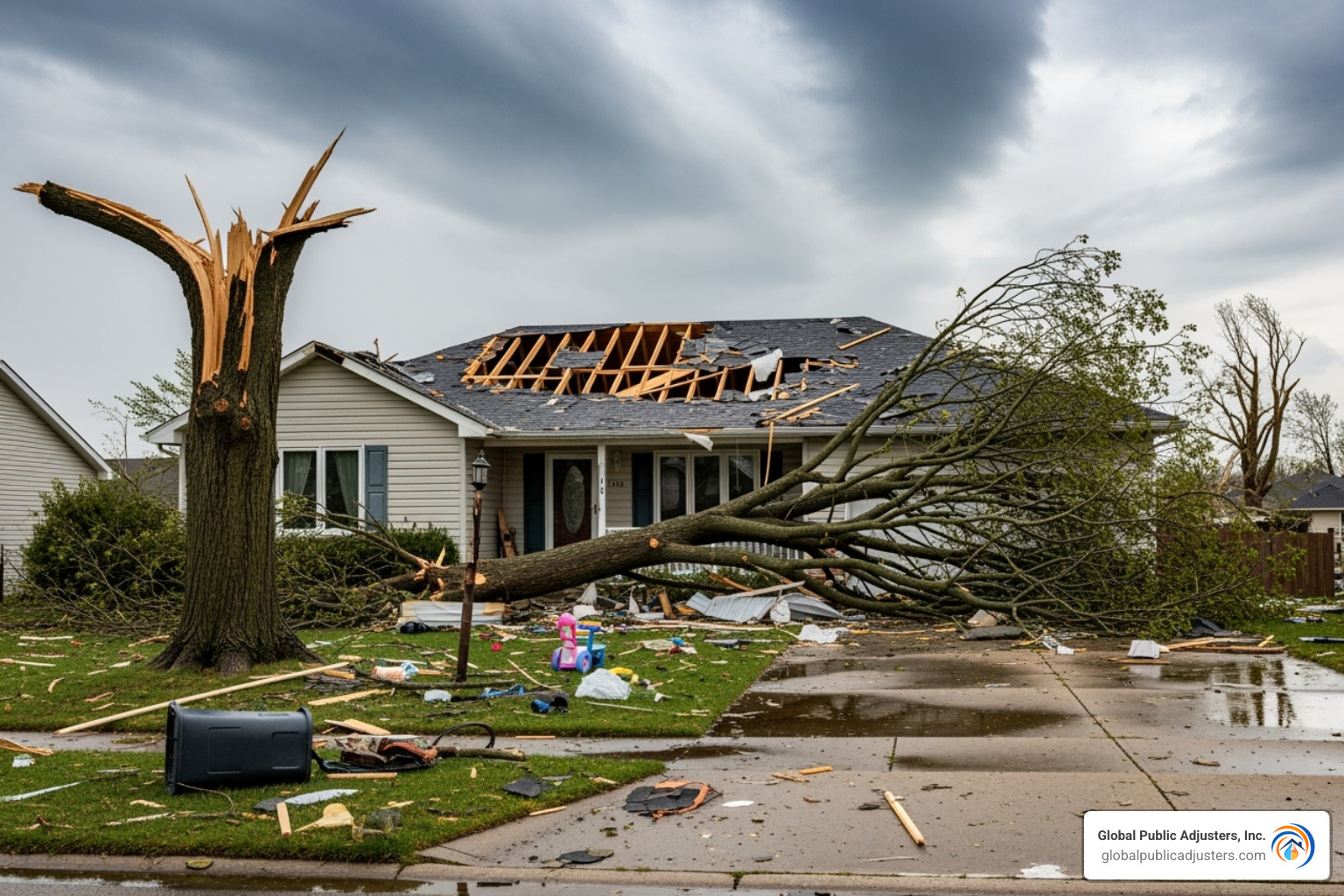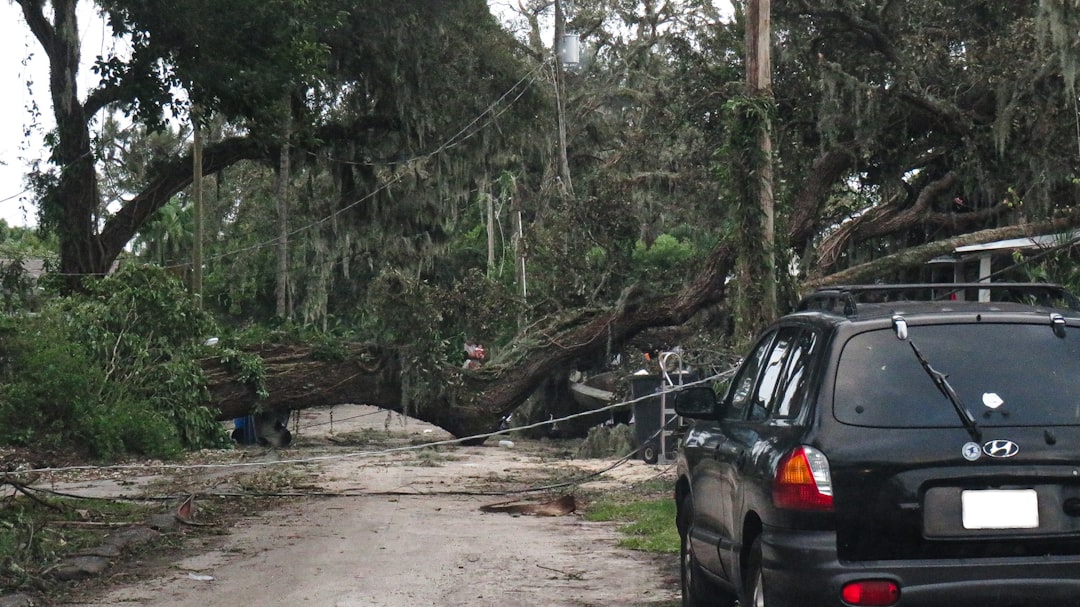Homeowners insurance storm damage: Maximize 2025 Success
Why Understanding Storm Damage Coverage Is Critical for Every Homeowner
Homeowners insurance storm damagecoverage is a financial lifeline when severe weather strikes, but understanding what’s protected—and what isn’t—can be confusing. In fact, wind and hail damage are the most common reasons homeowners file claims, surpassing fire, water damage, or theft.
What homeowners insurance typically covers for storm damage:
- Wind damage:Roof, siding, and windows from hurricanes, tornadoes, and thunderstorms.
- Hail damage:Impact damage to roofs, vehicles, and outdoor property.
- Lightning strikes:Fire damage and power surge damage to electronics.
- Fallen trees:When they damage your home or other covered structures.
- Water damage:From rain entering through a storm-damaged roof or windows.
What’s typically NOT covered:
- Flood damage:Requires a separate flood insurance policy.
- Water seepage:Groundwater entering the foundation.
- Earthquake damage:Needs separate earthquake coverage.
- Mold damage:Unless directly caused by a covered storm event.
- Neglect:Pre-existing maintenance issues are not covered.
The challenge is that your insurance company’s adjuster works for them, not you. When storms cause significant damage, having an advocate who understands the claims process can mean the difference between a fair settlement and paying for major expenses yourself.

Quickhomeowners insurance storm damagedefinitions:
Understanding Your Coverage: What’s Covered and What’s Not
When storm clouds gather, it’s natural to wonder:Will my insurance actually cover this?Most standardhomeowners insurance storm damagepolicies offer broad protection through four main areas:
- Dwelling coverage:Protects your home’s structure, like the roof and walls.
- Personal property coverage:Covers your belongings inside, from furniture to electronics.
- Other structures coverage:Protects detached buildings like a garage, shed, or fence.
- Loss of use coverage:Helps pay for temporary living expenses if your home is unlivable.

More info about property damage claims
What Types of Homeowners Insurance Storm Damage Are Covered?
Your policy typically covers a wide range of storm-related events:
- Windstorms:Damage from severe thunderstorms, microbursts, or nor’easters is usually covered. If wind tears off shingles and rain gets in, both the roof repair and interior water damage are generally covered.
- Hurricanes and Tornadoes:Damage from these violent storms is typically covered under your policy’s windstorm provisions.
- Hailstorms:Damage to your roof, siding, and outdoor property from hail is usually covered, though some policies have specific hail deductibles.
- Winter Storms:Issues like ice dams, roof damage from heavy snow, and falling ice-laden branches are typically covered perils.
- Lightning and Fallen Trees:Policies cover fire from lightning strikes and power surges. Damage to your home from any fallen tree is also covered, including removal of the tree parts that hit your property.
More info about hurricane damage
More info about tornado damage
What’s Typically Excluded from a Standard Policy?
Every policy has limits. Understanding these common exclusions is crucial:
- Flood Damage:This is the biggest gap. Standard policies do not cover damage from rising water, such as overflowing rivers or storm surge. You need a separate flood insurance policy.
- Water Seepage:Water entering through your foundation or walls due to poor drainage is not covered. This differs from rain entering through a storm-damaged roof.
- Other Exclusions:Earthquake damage, sewage backup, and sump pump failures require separate coverage or special endorsements. Mold is also generally excluded unless it’s a direct result of a covered peril, and even then, coverage is often capped.
- Poor Maintenance:Insurers will not cover damage resulting from wear and tear or a pre-existing issue, like a 20-year-old roof that was already failing.
General information about flood insurance
Understanding Your Deductible: Standard vs. Special Deductibles
Your deductible is what you pay before insurance kicks in. Most policies have a standardall-peril deductible(e.g., $1,000 to $2,500).
However, in storm-prone areas, you may havepercentage-based deductiblesfor specific events. Ahurricane deductibleis often 2% to 10% of your dwelling coverage. For a home insured for $300,000, a 2% deductible means you pay the first $6,000.Wind and hail deductibleswork the same way. Knowing which deductible applies is critical for budgeting and deciding when to file a claim.
| Deductible Type | Calculation | Example (for $300,000 dwelling coverage) |
|---|---|---|
| Standard (All-Peril) | Flat dollar amount | $1,000 or $2,500 |
| Hurricane/Wind/Hail | Percentage of dwelling coverage | 2% of $300,000 = $6,000 |
Your Step-by-Step Guide to Filing a Homeowners Insurance Storm Damage Claim
When a storm damages your home, filing a claim can feel overwhelming. However, a thorough, organized, and proactive approach can make the process manageable. Think of yourhomeowners insurance storm damageclaim as telling your home’s story: what happened, how it was affected, and what it needs to be whole again.

More info about the claims process
Step 1: Take Immediate Action After the Storm
Once it’s safe, your first priority is to protect your property from further harm. Your policy requires you to take reasonable steps to mitigate damage.
- Prioritize Safety:If you see structural damage or downed power lines, stay away and call professionals.
- Mitigate Damage:Tarp a damaged roof, board up broken windows, or shut off the main water valve if pipes are damaged. Your insurer will typically reimburse reasonable costs for these temporary repairs if the original damage is covered.
- Document and Save Receipts:Photograph your mitigation efforts and save every receipt for materials and labor. Do not attempt risky repairs yourself; hire a professional if needed.
More info about detecting water damage
Step 2: Document Everything Thoroughly
This step is crucial for protecting your claim.
- Take Photos and Videos:Capture everything from multiple angles. Start with wide shots for context, then zoom in on specific damage. Don’t forget the interior, including water stains, damaged furniture, and ruined electronics.
- Create an Inventory:List all damaged items with descriptions, brands, purchase dates, and estimated values. Include receipts or appraisals if you have them.
- Get Contractor Estimates:Obtain written estimates from licensed, reputable contractors. These help establish the scope of damage and repair costs, strengthening your claim.
- Keep All Receipts:Save receipts for everything related to storm recovery, including hotel stays and meals if your home is uninhabitable.
Step 3: Contact Your Insurer and Steer the Adjuster Meeting
With your documentation ready, it’s time to contact your insurer.
- Notify Your Insurer Promptly:Most policies require timely notification. You’ll receive a claim number for all future communications.
- Understand the Adjuster’s Role:The insurance adjuster works for the insurance company, not for you. Their job is to evaluate your claim based on your policy while protecting their employer’s interests.
- Prepare for the Inspection:Be present when the adjuster visits. Walk them through the damage, using your photos, inventory, and estimates as a guide. Point out anything they might miss and ask questions.
- Know Your Right to Representation:For complexhomeowners insurance storm damageclaims, you have the right to hire your own advocate. A public adjuster works exclusively for you to ensure all damage is properly identified, documented, and valued to help maximize your settlement.
More info about filing hurricane claims
Key Considerations and Potential Pitfalls
After starting the claims process, several potential issues can arise that may affect your settlement. Being aware of these common pitfalls is key.

What If a Neighbor’s Tree Falls on My Property?
This is a common scenario with a simple rule:your property, your policy.If a neighbor’s healthy tree falls on your house during a storm (an “Act of God”), yourhomeowners insurance storm damagepolicy typically covers the damage and removal of the tree from your structure. Your neighbor is not automatically responsible.
The exception isneighbor negligence. If the tree was clearly dead or diseased and your neighbor failed to address the hazard, their insurance may be held liable. In this case, your insurer would likely pay your claim first and then seek reimbursement from your neighbor’s policy. Most policies include debris removal coverage, but it often has limits.
Will Filing a Claim Affect My Policy?
Filing a claim can impact your policy, so it’s a strategic decision.
- Premium Increases:A significant claim may lead to higher premiums at renewal.
- Non-Renewal Risk:Insurers may choose not to renew your policy if you file multiple claims in a short period. For example, aMinnesota law effective August 1, 2024,allows non-renewal after three or more covered weather-related losses over $10,000 in five years.
- Deciding When to File:Your claim history follows you. If repair costs are only slightly more than your deductible, consider paying out of pocket to avoid a potential rate hike. However, don’t hesitate to file claims for significant damage—that’s why you have insurance.
How to Avoid Common Post-Storm Scams
Disasters attract scammers. Protect yourself from these common threats:
- Storm Chasers:Be wary of unlicensed contractors who appear after a storm, offer “free” inspections, and use high-pressure tactics to get you to sign a contract.
- Assignment of Benefits (AOB):Be extremely cautious about signing an AOB. This legal document transfers your insurance claim rights to a contractor, giving them control over your settlement. This can lead to inflated invoices and loss of control over your own claim.
- Verify Credentials:Always work with licensed, insured, and reputable local contractors. Ask for proof of license and insurance, check references, and look up reviews on sites like theBetter Business Bureau. Legitimate professionals provide written estimates and don’t pressure you into immediate decisions.
Proactive Protection: Preparing Your Home for Storm Season
The best way to handlehomeowners insurance storm damageis to minimize it in the first place. Proactive preparation can save you thousands of dollars and significant stress.

- Create a Home Inventory:Before a storm, document your belongings with photos or video. Record serial numbers, purchase dates, and values. Store this inventory in the cloud so it’s accessible from anywhere.
- Perform Regular Maintenance:A well-maintained home is your best defense. Clean gutters, replace loose shingles, and fix small issues before they become major problems. Insurance covers sudden damage, not neglect.
- Secure Outdoor Items:Patio furniture, grills, and other loose items can become dangerous projectiles in high winds. Bring them inside or tie them down securely.
- Maintain Trees and Landscaping:Have a professional arborist trim branches hanging over your house and remove any dead or diseased trees that pose a risk.
- Prepare an Emergency Kit:Stock up on water, non-perishable food, flashlights, batteries, and a first-aid kit. Keep important documents, like your insurance policy, in a waterproof, grab-and-go container.
- Review Your Policy Annually:Meet with your agent to understand your coverage, limits, and deductibles. Determine if you need additional protection, like flood insurance, before you need to file a claim.
More info about hurricane preparation
Frequently Asked Questions about Storm Damage Insurance
After a storm, homeowners have many questions. Here are answers to some of the most common ones we hear regardinghomeowners insurance storm damageclaims.
Does homeowners insurance cover mold damage after a storm?
This is tricky. Most standard policies exclude mold, but with a key exception: if the mold is adirect resultof a covered peril, it may be covered. For example, if a storm-damaged roof leads to a leak that causes mold, the remediation may be covered. The damage must be “sudden and accidental,” not from a slow leak or general humidity.
Be aware that even when covered, policies often have low limits for mold remediation, sometimes only $10,000 to $15,000. This is why immediate mitigation to dry out wet areas is critical to prevent mold growth in the first place.
How long does it take to get a payout for a storm damage claim?
The timeline varies. Simple claims might be settled in a few weeks, while complex claims involving structural damage can take several months. Key factors include:
- Claim Complexity:The more severe and widespread the damage, the longer it takes.
- Your Documentation:High-quality photos, inventories, and estimates can speed up the process significantly.
- Widespread Disasters:After major events like a hurricane, insurers become overwhelmed, leading to system-wide delays.
- State Regulations:Some states have laws requiring insurers to respond and pay within certain timeframes, but delays can still occur.
What should I do if my insurance company’s settlement offer is too low?
A low settlement offer is common, but you don’t have to accept it.
- Review the Adjuster’s Report:Carefully check the report for missed damage or undervalued repair costs. Compare it to your own documentation and contractor estimates.
- Request a Re-evaluation:If you find discrepancies, formally request a re-evaluation and provide your supporting evidence.
- Understand the Appraisal Process:Your policy likely includes an appraisal clause for disputes. Each side hires an appraiser, and they select a neutral umpire to reach a binding decision if they can’t agree.
- Seek a Second Opinion:A licensed public adjuster works for you, not the insurance company. We can provide an independent assessment of your damage, identify issues the company adjuster may have missed, and negotiate on your behalf to ensure you receive the full settlement you’re entitled to.
More info about licensed insurance specialists
Conclusion
When a storm damages your home, navigating ahomeowners insurance storm damageclaim adds stress to an already difficult situation. You have to understand complex policies, document everything perfectly, and negotiate with adjusters who represent the insurance company’s interests.
But you don’t have to do it alone. Understanding your policy, taking immediate steps to prevent further damage, and thoroughly documenting your loss are your first lines of defense. They are the foundation of a successful claim.
However, your most powerful tool is your right to fair representation. Insurance companies have experts on their side; you should too. At Global Public Adjusters, Inc., we have over 50 years of experience advocating exclusively for homeowners. We know how to interpret policies, value damage correctly, and negotiate effectively to maximize your settlement.
Don’t let an insurance company shortchange you. You’ve paid your premiums, and you deserve the full amount you are owed. We are here to handle the complexities of the claims process so you can focus on rebuilding.



